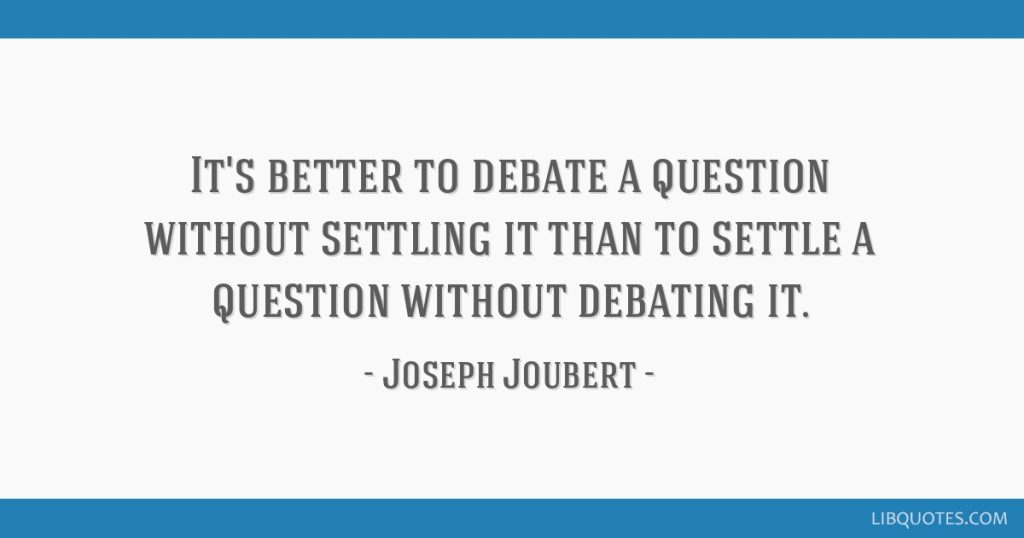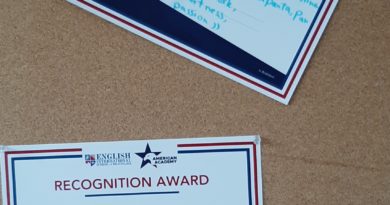New Elective: The Art of Debating
Being able to construct an argument based on evidence is an invaluable skill for students to develop. For this reason, and due to student interest, I’ve decided to start a new elective at EISB for students to learn and practice the skills of effective debating.

Why is it important for students to learn how to debate?
By learning and practicing debating, students can develop numerous skills that are becoming increasingly important in the 21st century, such as critical thinking, unbiased reasoning, information and media literacy, research skills, forming evidence-based opinions, organizing thoughts, presentation skills, language competencies (e.g., speaking, enunciation, vocabulary, etc.), and more.
It is also important for students to learn to be able to separate fact from opinion – and understand the necessity of doing so. An important part of class debates is that sometimes students will have to argue for a motion that is counter to their own opinions. Students must learn to to separate their own feelings and biases from the topic at hand in order to focus on the evidence and argue for whatever side they are on. This is not an easy thing for many middle school students to do, so debating can be a good activity to foster this ability and develop students’ unbiased reasoning skills at this age.
How can we teach debating to students?
The first step to having successful class debates is for students to learn basic argument construction. There are many ways to teach basic argument construction; however, one method that I have found particularly helpful and easy for students to understand is the LEET Method.
The LEET Method helps students organize their arguments. Making it easier for the students to remember, LEET is an acronym that stands for: Label, Explain, Example, and Tieback. Below is a helpful video with middle school students explaining the LEET Method in their own words:
Each component of the LEET Method is briefly explained here (Source: Saskdebate.ca):
Label
‘Before developing an argument you need to tell the judges what your argument is about. A label should clarify to your judges the main idea of your argument in less than a sentence.’
Explain
‘Once you’ve told the judges what your argument is about, you need to explain what exactly you meant. This section of your argument is also referred to as analysis. It is very important that as you explain your argument you walk your judge logically through the steps of your point. Your ultimate goal is to show the judges why your argument is true.’
Example
‘After explaining why your argument is true, it is very useful to provide an example or evidence to support your claim. In a prepared motion, you might use statistics or a very specific example. But in an impromptu round, it is unlikely that you know tons about the topic. If you do, that’s great! Otherwise, using general examples or linking your argument to another idea can be just as useful. Make sure to explain why your example is relevant; if you don’t tie it to your argument, the example doesn’t serve a purpose.’
Tieback
‘A tie back is a few sentences explaining what makes your argument so important to the round and why it belongs in your case. Think of it as the concluding sentence in a written paragraph.’

Throughout the next semester, students in the debate elective will have the opportunity to use the LEET Method to learn basic argument construction as they engage in numerous debates with relevant and interesting topics chosen by both teachers and students!
Source:
The descriptions of the LEET Method listed above are taken from https://saskdebate.ca/resources/resources-for-students/basic-argument-construction




